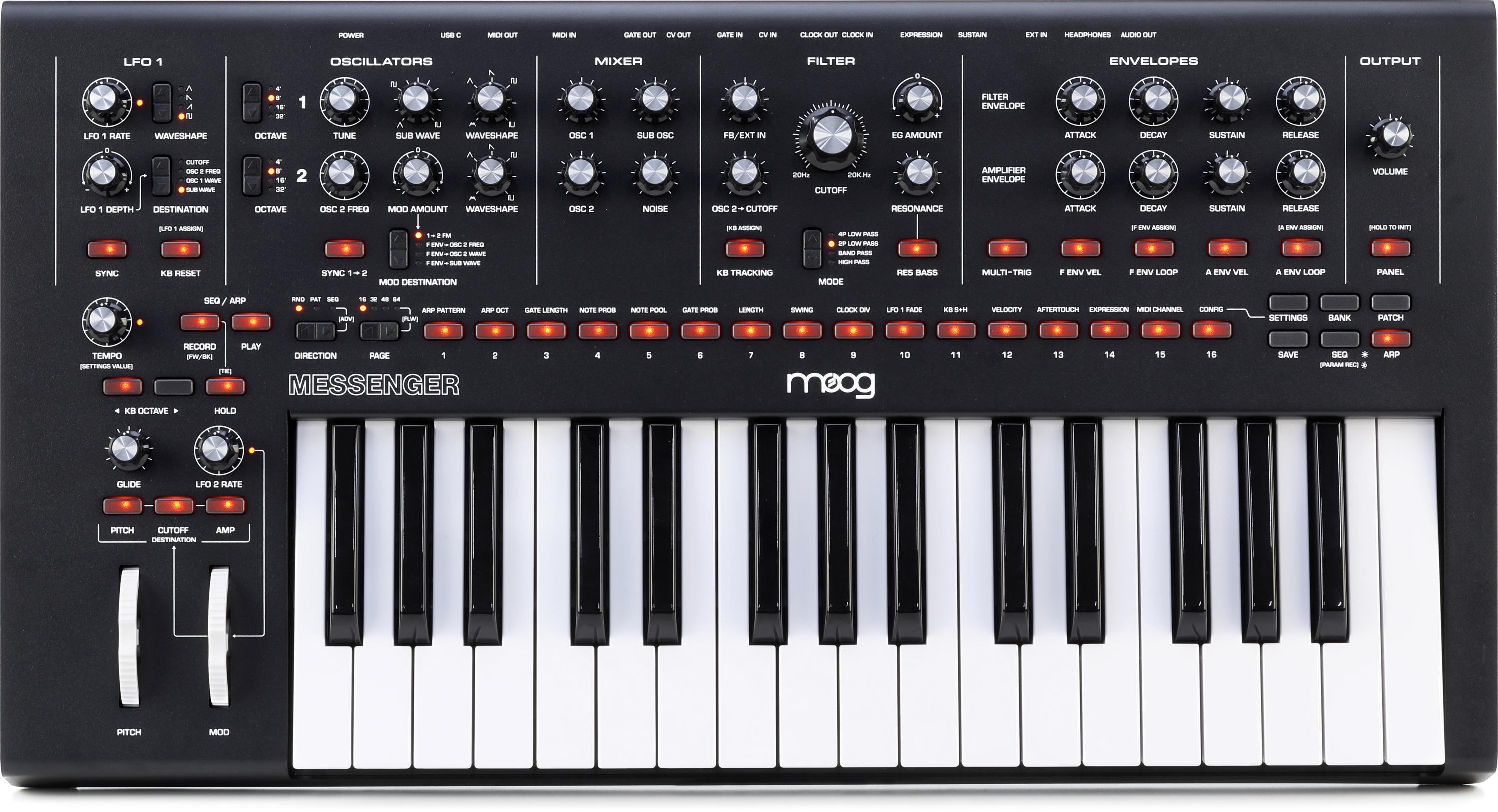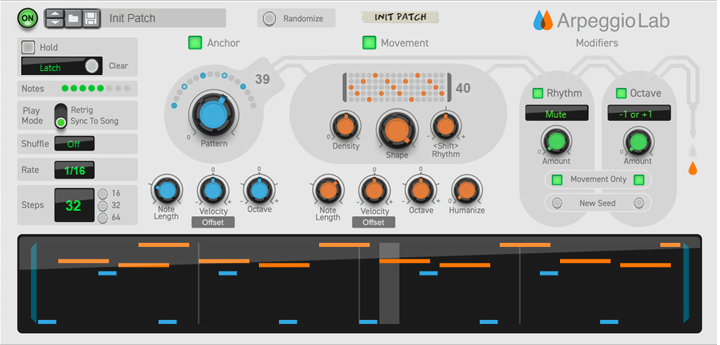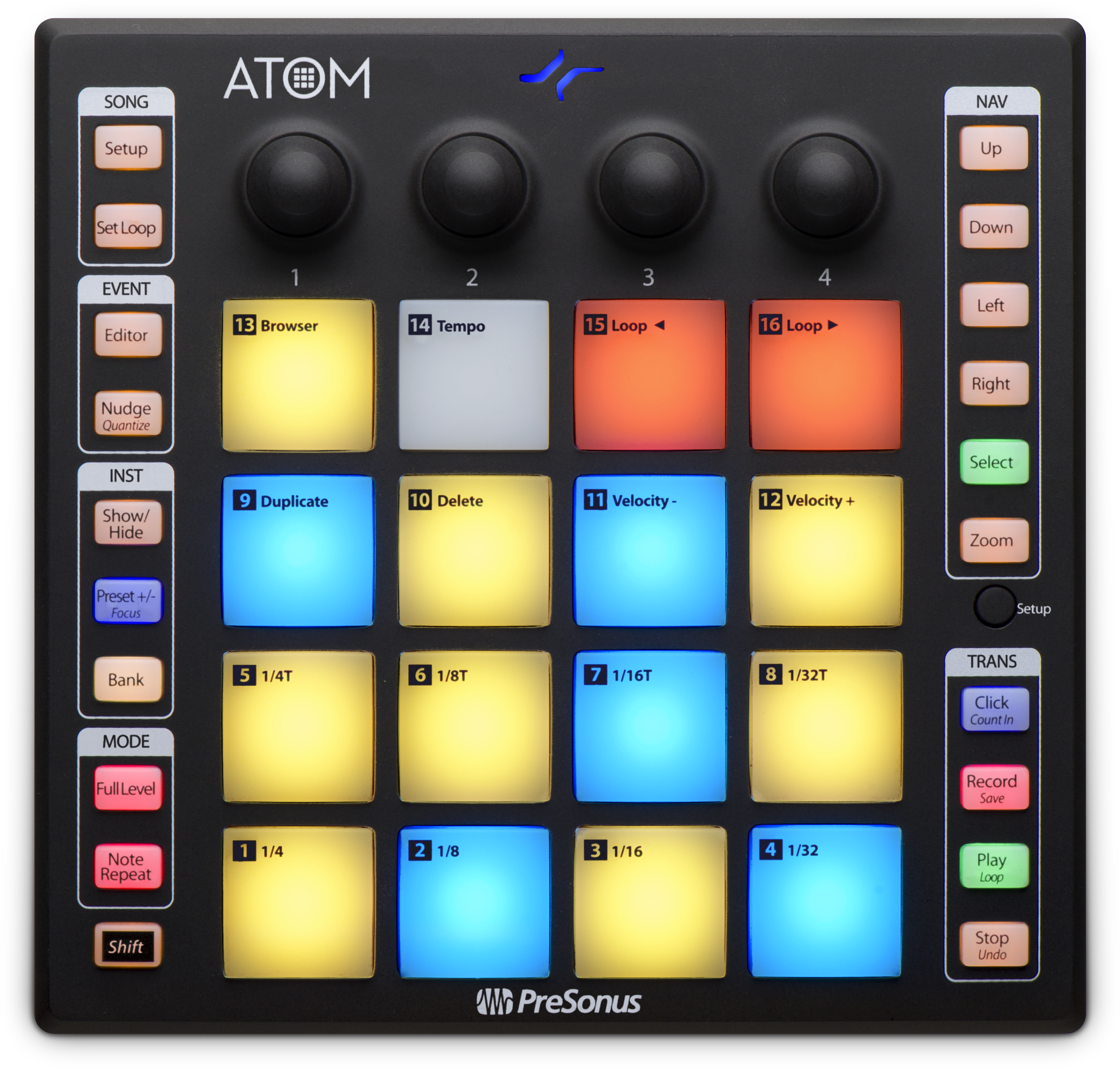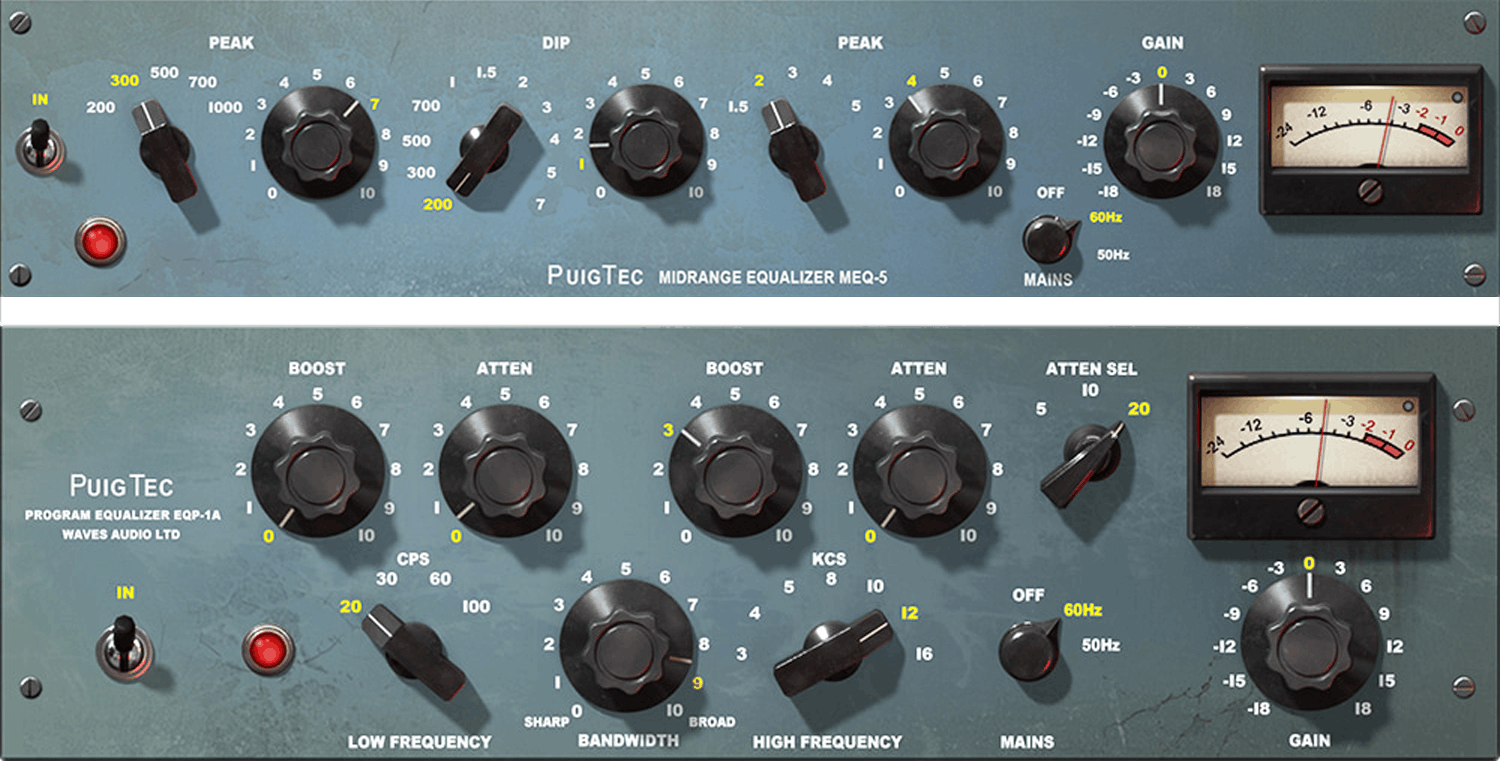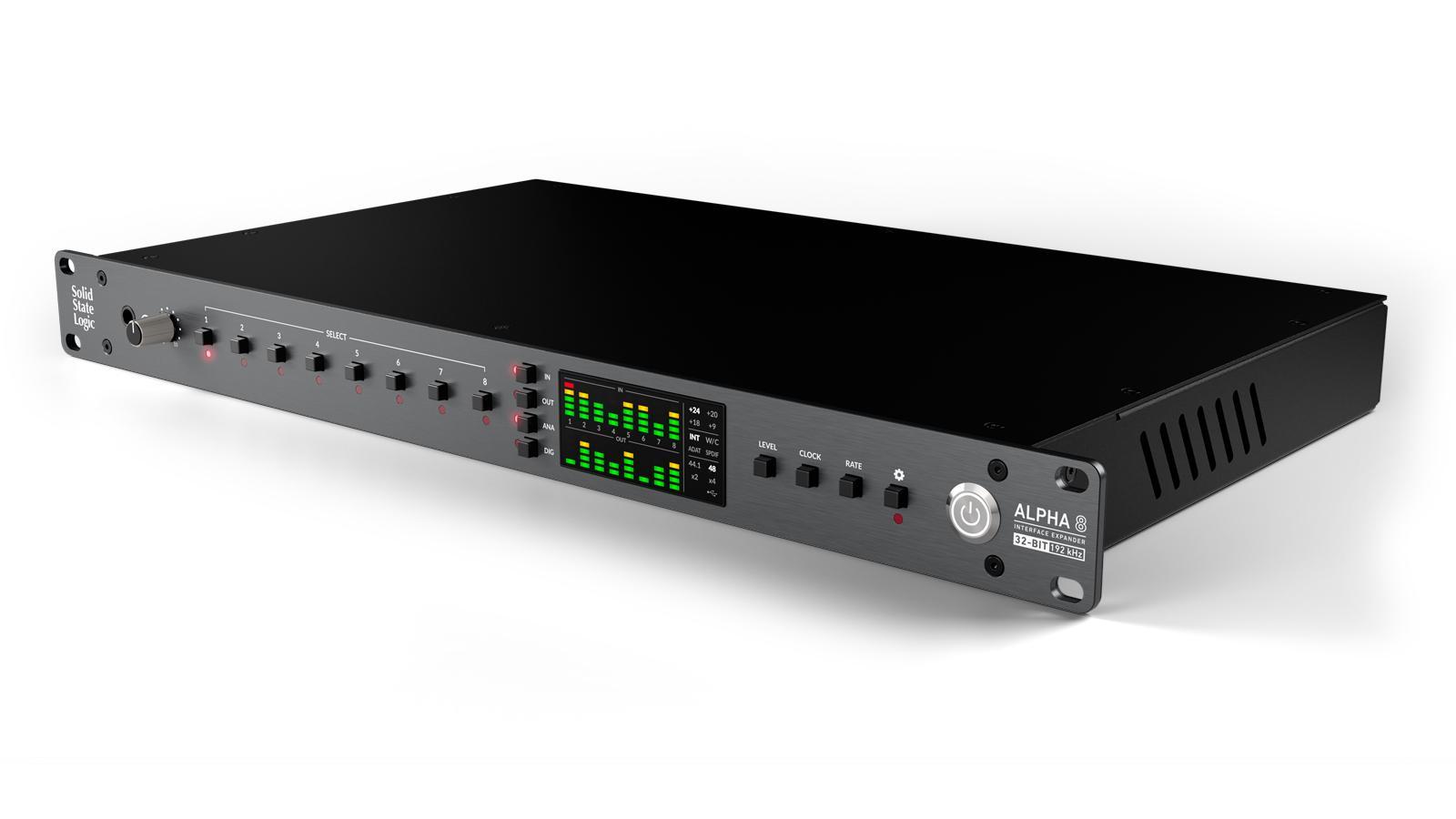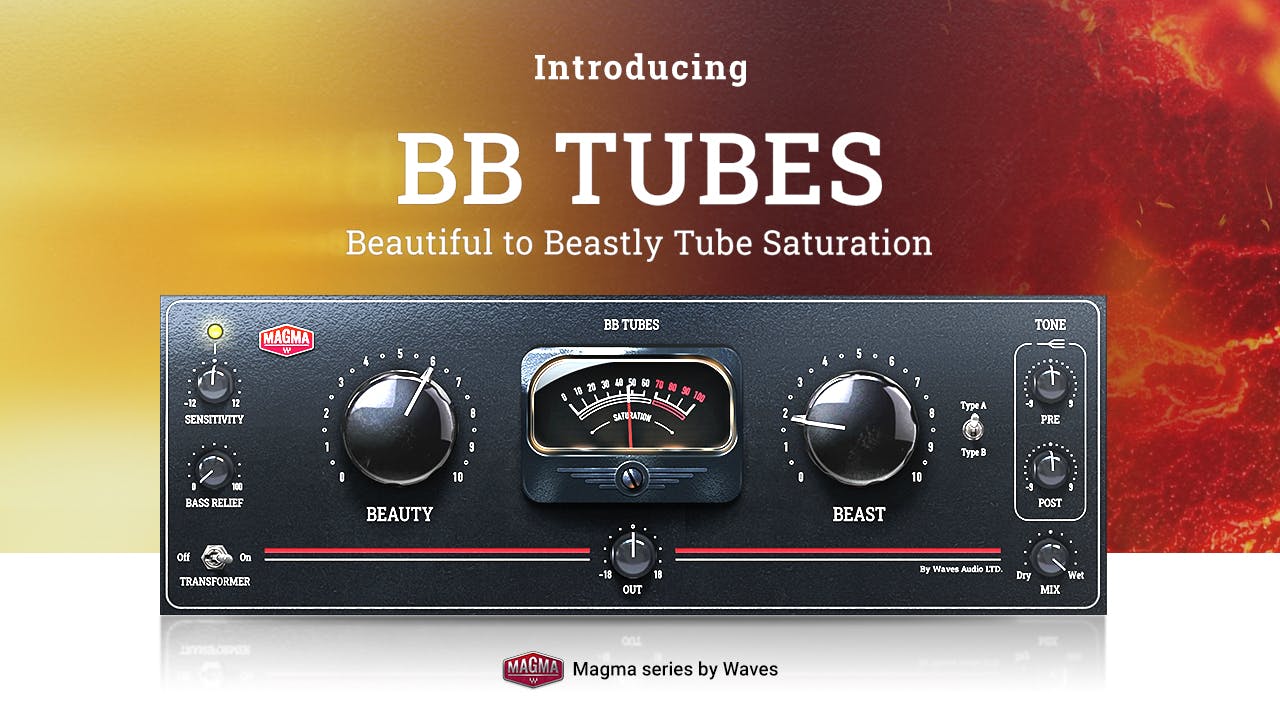The Verdict
★ ★ ★ ★ ★ (5/5)
Price: $899.00
Best For: Sound designers, synth purists, stage performers, producers craving Moog muscle with modern finesse.
Introduction: Moog’s Message is Loud and Clear
In a market saturated with analog mono synths claiming to deliver “vintage warmth meets modern workflow,” Moog cuts through the noise with the Messenger, a semi-weighted, aftertouch-enabled monophonic analog synthesizer that doesn’t just speak your language — it channels your musical instincts. With a heritage forged in voltage and legend, the Messenger is more than a synthesizer. It’s a statement.
At $899, Moog has delivered a fully-fledged analog workhorse at a price point that’s practically subversive for a brand so iconic. If you’ve ever fantasized about owning a Moog but couldn’t justify the investment, this is your green light.
Build & Design: Road-Ready Elegance
Built like a tank and wrapped in a solid 10.91-lb metal chassis, the Messenger doesn’t compromise on construction. The 32-note, semi-weighted keybed — complete with velocity and aftertouch — is nothing short of luxurious at this price. Add pitch and mod wheels, octave transpose, and glide controls, and you’ve got an expressive instrument that encourages two-handed performance rather than menu diving.
The layout is unmistakably Moog: knob-per-function, clean, logical, and tactile. Whether you’re dialing in a sound from scratch or riding modulation parameters mid-sequence, the interface invites exploration without ever feeling bloated.
Sound Engine: Analog with a Modern Edge
This isn’t just another Moog monosynth with retro flavoring. The Messenger’s voice architecture offers two fully variable-waveform VCOs with wavefolding, FM, and sync capabilities, plus a sub-oscillator and a white noise generator. It’s fat, yes — but also nimble, and capable of surgical precision or chaotic entropy depending on your patching mood.
And then there’s the ladder filter — the stuff of synth lore. But this time, it’s evolved. Moog’s novel pole-mixing design gives you lowpass, bandpass, and highpass responses in 4-pole and 2-pole configurations. The Res Bass switch is a godsend for bass lovers, preserving low-end presence even when resonance is pushed into self-oscillation.
The sonic character ranges from searing leads and subterranean bass to delicate textures and generative chaos — all steeped in unmistakable Moog DNA but with enough edge and scope to rival modular systems in flexibility.
Modulation & Creative Features: Uncaged Expression
Where the Messenger really earns its stripes is in its modulation architecture. You get two loopable ADSR envelopes, two independent LFOs, and multiple routing possibilities — some via front-panel knob, others deeper via modulation buses. LFO 1 is syncable and resettable, with dedicated routing for PWM, wavefolding, filter FM and more. LFO 2 is tied to the mod wheel, making live tweaking a joy.
This isn’t just about routing — it’s about motion. And when you activate the 64-step sequencer/arpeggiator, complete with generative probability, parameter recording, and randomization, the Messenger becomes a composition tool in its own right. No DAW necessary — just ideas and fingers.
Connectivity & Integration: Studio-Ready, Gig-Approved
Whether you’re syncing to Eurorack via CV/gate, controlling vintage MIDI gear, or composing in your favorite DAW, the Messenger plays nice. Its USB-C/MIDI, 5-pin DIN MIDI, analog clock I/O, and expression/sustain pedal jacks cover all the bases for modern workflows.
And let’s not overlook the audio input — a welcome touch for processing external audio through its legendary filter and modulation paths.
Presets & Workflow: Inspiration on Tap
256 total presets — with 240 factory-crafted patches spanning leads, basses, pads, rhythmic elements, and more — provide a wealth of inspiration right out of the box. It’s a rare pleasure to find a synth that encourages deep programming yet offers enough quality presets to perform immediately.
Even more impressive is how fast the Messenger becomes an extension of your ideas. The workflow is immediate, the sound is world-class, and the hands-on control is everything you’d expect from Moog — just streamlined for the 21st century.
Final Thoughts: Messenger Delivers the Signal
With the Messenger, Moog has pulled off something remarkable: delivering an analog synth that respects its past while embracing the future. It’s rugged enough for stage use, detailed enough for studio production, and priced for real-world musicians.
This isn’t just “a good synth for the money.” This is a great synth, full stop — made by a company that knows its audience, understands modern workflows, and still believes in the magic of hands-on analog synthesis.
Should You Buy It?
If you’re in the market for a monophonic analog synth with serious tone, meaningful modulation, and the ability to move between performance, design, and composition modes effortlessly — this is the synth to beat.
Pros
- Iconic Moog tone with modern features
- Aftertouch-enabled, semi-weighted keybed
- Deep modulation with intuitive routing
- Feature-rich arpeggiator/sequencer with probability
- CV/gate, MIDI, and USB-C integration
- Exceptional value for the feature set
Cons
– Monophonic only (though it excels at it)
– No onboard effects (but easily remedied externally)
The Bottom Line:
The Moog Messenger isn’t just the medium — it’s the message: analog synthesis can still be powerful, playful, and affordable.
👉 Available now at Sweetwater and select retailers for $899.





























